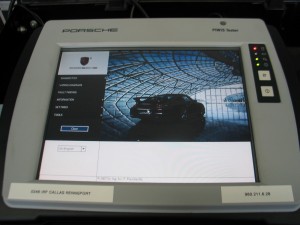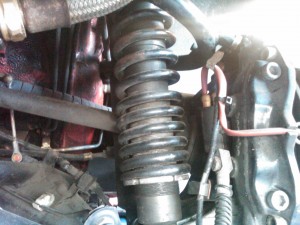Posted on 12/29/2011

The history of Porsche diagnostic testers basically all started with the Bosch D-Jetronic fuel injection system tester for the 914 in the early 70’s. Then we received the 9268 digital output fault code reader in 1987 which would present the technician with an actual fault code number. The retrieved fault code corresponded to different conditions or problems recorded by the cars on board computer. The 9268 was intended to interface with the newly designed 16 valve 944S and 928 S4. This was eventually replaced by the 9288 nicknamed the Bosch Hammer because it was in the shape of a hammer, codenamed the PST-1 (Porsche Systems Tester-1) computerized diagnostic tester, circa 1989. The 9288 was mainly designed to interface with the 1989-on 964’s (911) and had to be capable of performing a “system adaptation” which was to reset all the controllers, much like a computer reboot. Later this procedure became known as a “vehicle handover”. Following the 9288 Hammer, Porsch ... read more
Posted on 12/26/2011
As automobile electrical and charging systems have become more complex, the battery has had some difficulty following suit. The standard automotive lead acid battery has remained relatively unchanged since its inception. Today’s automotive electrical systems are becoming too demanding for anything other than a modern AGM (Absorbed Glass Matt) battery. 2005 and later Porsches, such as the 9PA (Cayenne), the sports cars i.e. 987 (Boxster and Cayman) and 997 (911) and now (especially) the new 970 (Panamera) operate using CAN (Controller Area Network) type bus systems that allow advanced communications between and within the many systems in the vehicle. The CAN-bus system is intended to share information and operational responsibility between controllers and control units that can be physically located in different areas of the car. With all of this in mind, we often forget about the stringent demands the electrical charging system and battery are ... read more
Posted on 12/3/2011
Up until now there has been no way to determine the condition of the IMS bearing without removal of the transmission and associated components to perform a direct inspection of the bearing. Due to the time and expense necessary to gain access to the IMS bearing, it is generally considered best to remove and replace it regardless of its condition as a preventive measure. The IMS Guardian is sold as a complete system. The package includes a wiring harness, electronic circuitry box with audio buzzer, all wiring connectors, an LED warning light/test switch, the MCD sensor, installation instructions and a step by step Installation DVD. The installation is straight forward and made relatively easy by the details available in the manual. It appears that Raby Engine Development has done the hard work of thinking through the process and has designed a product that is easy to install and operate. Someone that works on their own car and can follow electrical w ... read more
Posted on 11/8/2011

Shocks are designed not just to dampen out the road bumps and irregularities. Most think the weight of the car is keeping the wheels (tires) on the ground when the automobile is in motion but in all actuality it is the shocks and suspension. Often you might be driving down the freeway and notice that the car next to you has one of the wheels bouncing excessively, this is usually caused by a faulty or worn out shock absorber(s). Every split second the tire isn’t firmly planted on the ground, the vehicle is not is complete contact with the road. There are accidents every day that are caused by worn out or faulty shock absorbers. After an accident, the reason for the loss of control is never determined or most don’t worry about this, they just take the blame onto themselves for their lack of car handling skills when all along the suspension was far from adequate. There are a few ways to determine the condition of the shocks. First you can drive the car paying s ... read more